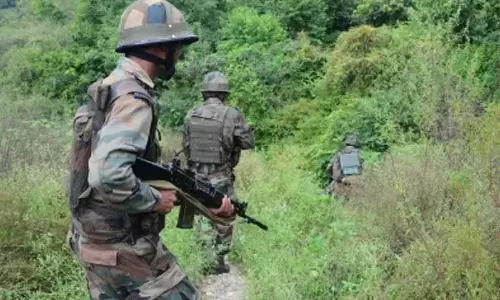Hyderabad lakes too can catch fire

The lakes in the city are also prone to accidents like the one that happened at the Bellandur lake in Bengaluru.
Hyderabad: The lakes in the city are also prone to accidents like the one that happened at the Bellandur lake in Bengaluru.
The largest lake in the IT city of India, Bellandur caught fire due to toxic froth and became a victim of toxic smoke, courtesy chemicals and debris dumped near the lake.
The situation at some of the lakes in Hyderabad city such as Asani Kunta, Khazipalli Kunta and Noor Mohammad Kunta is no different.
Experts warn that lakes in the downstream of the IDA Industrial Park are highly contaminated with the industrial effluents.
They pose serious threat to the citizens as they might catch fire at any moment. Lake protection and water management expert BV Subba Rao said the PCB authorities show keen interest in getting World Bank funds but are not improving the lakes in the city.
He said Noor Mohammad Kunta at Kattedan, Asani Kunta and Khazipally Cheruvu at the IDA Bollaram are under serious threat since the lakes have dried up and have immense amounts of pollutants on the tank beds.
Rao says that the dry pollutants when exposed to sun have every chance to catch fire and cause respiratory problems in the entire vicinity.
He said a dried up lake with chemical pollutants is more dangerous than Bellandur. If the lake has water the intensity of chemicals might get diluted to some extent but it is not so in the case of dried-up or nearly dried-up lakes, he said.
The lake protection expert also said that the PCB was yet to find a scientific approach to assess the situation of the lakes. He asked the PCB officials to assess the pollutants present and should take up remedial measures.
Rao said the industrial effluents through small nalas and other sources have been entering the Musi river on one side and Manjeera on the other.
He said that 17 kathvas (check dams) starting from Narayana Kathva near Pedda Cheruvu in the downstream of Musi are highly inflammable and can catch fire easily.
The expert also advised the government to constitute a separate Lake Authority for the Greater Hyderabad Municipal Corporation so that it would help study and improve the condition of the city lakes. He also asked the government to recruit lake experts rather than irrigation engineers.
N Ravindar, senior environmental scientist at the Pollution Control Board (PCB) said that they would again assess the situation. He said according to their studies, 95 per cent lakes in the city were safe and the board has ensured that industrial effluents were not released into them.
He said the PCB was aware that the city lakes, including Noor Mohammad Kunta, Asani Kunta and Kazipally Cheruvu, were contaminated by sewer.
He said the PCB has directed the water board to divert the sewer water to common effluent treatment plants (CETPs). He said the PCB has been committed to control the contamination levels in the city lakes and would continue to do so.








